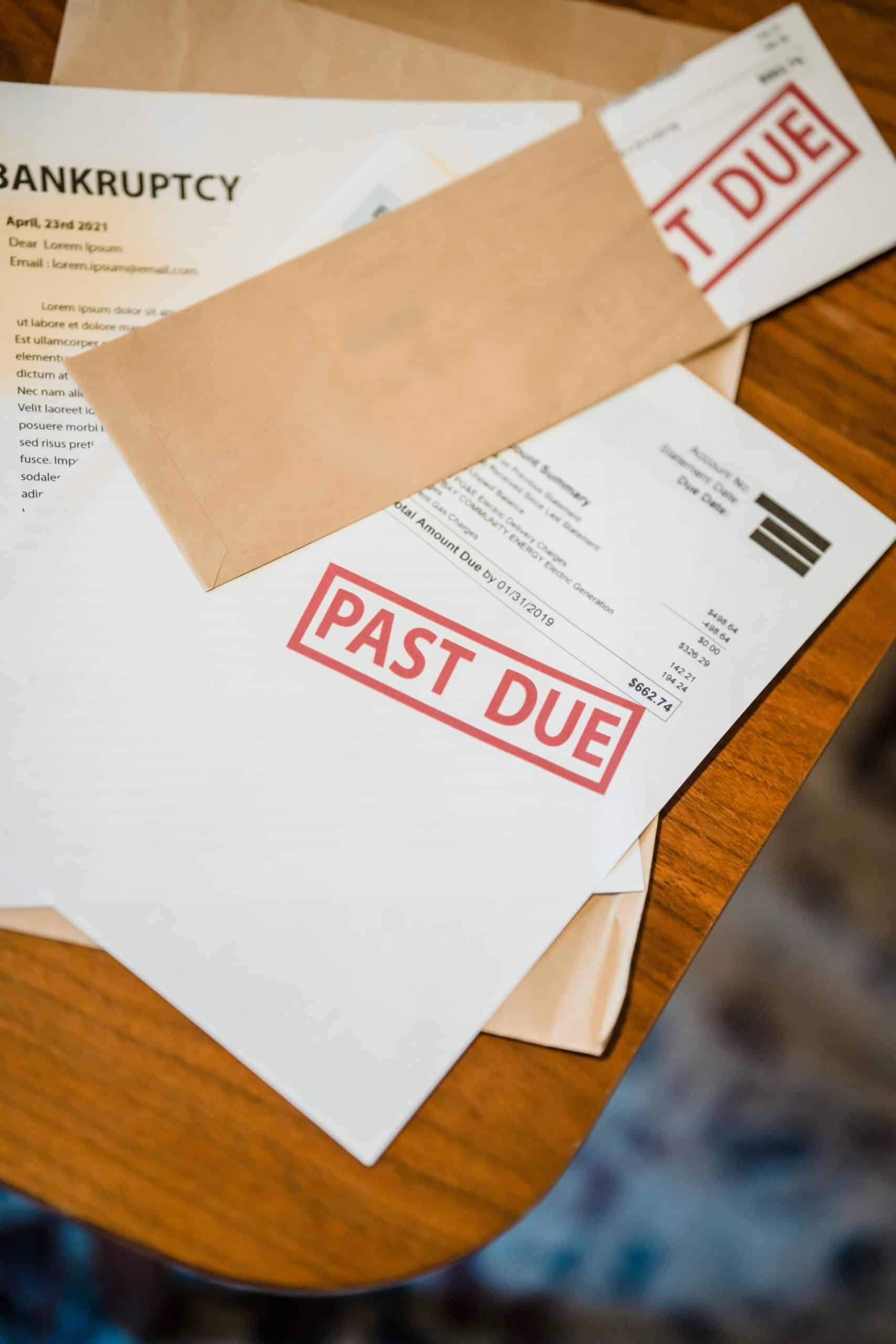If you're buried under a mountain of debt and contemplating bankruptcy, the thought of hiring an expensive lawyer may only add to your stress. However, you'll be relieved to know that filing for bankruptcy without a lawyer is possible, and it can help you rid yourself of crippling debt. In this article, we will explore the steps you can take to navigate the bankruptcy process on your own, saving you both time and money. From understanding the different types of bankruptcy to gathering necessary paperwork, we've got you covered. So, let's dive into the world of bankruptcy and discover how you can become debt-free without the assistance of a lawyer.
Understanding Bankruptcy
Bankruptcy is a legal process that individuals and businesses can pursue when they are unable to repay their debts. It provides a fresh start by eliminating or restructuring obligations and giving the filer a chance to rebuild their financial life. However, it is essential to understand the different types of bankruptcy, the pros and cons of filing for bankruptcy, and alternative options.

This image is property of images.pexels.com.
Different types of bankruptcy
There are several types of bankruptcy, but the most common ones for individuals are Chapter 7 and Chapter 13 bankruptcy.
Chapter 7 bankruptcy, also known as liquidation bankruptcy, involves the sale of non-exempt assets to repay creditors. This type of bankruptcy allows for the discharge of most unsecured debts, such as credit card debt and medical bills. Chapter 7 is generally suitable for those with limited income and significant financial struggles.
On the other hand, Chapter 13 bankruptcy, also known as reorganization bankruptcy, involves creating a repayment plan that spans three to five years. It allows individuals to keep their assets while making regular payments to creditors. Chapter 13 is typically beneficial for those with a regular income who can afford to repay a portion of their debts.
Pros and cons of filing for bankruptcy
Filing for bankruptcy provides immediate relief to individuals burdened with overwhelming debt. Some of the advantages of bankruptcy include the elimination or reduction of debt, protection from collection efforts by creditors, and the ability to start anew financially.
However, filing for bankruptcy also has its drawbacks. One significant disadvantage is the negative impact on one's credit score, making it harder to obtain credit in the future. Additionally, certain debts may not be dischargeable in bankruptcy, such as student loans and child support payments. It is crucial to weigh the pros and cons based on your unique financial situation before deciding to file for bankruptcy.
Alternatives to filing for bankruptcy
Bankruptcy is a serious decision that should be considered carefully. Before pursuing bankruptcy, it is worth exploring alternative options. Some alternatives to filing for bankruptcy include negotiating with creditors to establish a repayment plan, seeking credit counseling, or consolidating debts through a loan. Each option has its advantages and limitations, so it's essential to consult with a financial professional to determine which alternative suits your situation best. Remember, bankruptcy should be the last resort.
Preparing for Bankruptcy
Before initiating the bankruptcy process, it is crucial to take specific steps to ensure a smooth and successful experience. This section will outline the necessary preparations you should undertake.
Evaluate your financial situation
Before filing for bankruptcy, it is essential to evaluate your financial situation thoroughly. Make a list of all your debts, including the amount owed, interest rates, and payment terms. Assess your income and expenses to determine if you have a negative cash flow that prevents you from repaying your debts. Understanding your financial state will help you decide which bankruptcy chapter is most suitable for your circumstances.
Gather all necessary documents
To file for bankruptcy, you will need various financial documents and records. These may include bank statements, tax returns, pay stubs, and documentation of your debts, assets, and expenses. Collecting these documents in advance will ensure a smooth filing process and prevent delays caused by missing information. It is advisable to keep all your financial records organized and easily accessible throughout the bankruptcy process.
Research your local bankruptcy laws
Bankruptcy laws vary by jurisdiction, so it is crucial to research and familiarize yourself with your local regulations. Understanding the specific requirements and procedures will help you navigate the bankruptcy process more effectively and avoid potential pitfalls. Various online resources and legal aid organizations can provide information on local bankruptcy laws. Additionally, consulting with a bankruptcy attorney or attending informational seminars can be valuable sources of information.
Filing for Bankruptcy
Once you have completed the necessary preparations, you can move forward with filing for bankruptcy. This section will guide you through the key steps involved in the filing process.
Determine the correct bankruptcy chapter
Based on your financial situation and goals, you must determine the most appropriate bankruptcy chapter. As mentioned earlier, Chapter 7 and Chapter 13 bankruptcy are the most common options for individuals. Consulting with a bankruptcy attorney or a credit counseling agency can help you assess which chapter is best suited to your needs. It is crucial to select the right chapter from the outset to avoid complications or the need for conversion later in the process.
Complete the required bankruptcy forms
Filing for bankruptcy involves completing a series of forms that provide details about your financial situation, debts, assets, income, and expenses. These forms, often referred to as bankruptcy schedules, must be completed accurately and honestly. Mistakes or omissions in the forms can lead to significant consequences, including dismissal of the case or allegations of bankruptcy fraud. It is advisable to seek professional assistance or use bankruptcy software to ensure the forms are filled out correctly.
Filing fees and payment options
When filing for bankruptcy, there are several costs involved, including court filing fees and administrative fees. The exact amount will depend on the bankruptcy chapter and jurisdiction. If you are unable to afford the fees, you may be eligible for a fee waiver or installment payment plan. It is essential to inquire about fee options at the bankruptcy court or consult with a bankruptcy attorney to understand your payment options.
Navigating the Bankruptcy Process
Once the bankruptcy petition is filed, you enter the navigating phase of the bankruptcy process. This section will provide an overview of the key steps involved.
Meeting with a bankruptcy trustee
After filing for bankruptcy, you will have a meeting with a bankruptcy trustee. The trustee is a court-appointed individual responsible for overseeing your case. During this meeting, known as the 341 meeting or creditors' meeting, the trustee will review your bankruptcy forms, ask questions, and ensure that the information provided is accurate. It is crucial to be prepared by bringing any requested documents and answering the trustee's questions truthfully and to the best of your knowledge.
Attending the creditor meeting
In addition to the meeting with the trustee, there may be a separate meeting with creditors. This meeting gives creditors the opportunity to raise any concerns or objections related to your bankruptcy case. While these meetings can be intimidating, it is essential to remain calm and cooperate with the trustee and creditors. Being transparent and responsive throughout the process will help ensure a smoother bankruptcy journey.
The automatic stay
Once your bankruptcy case is filed, an "automatic stay" goes into effect. The automatic stay is a powerful protection that prevents most creditors from taking collection actions against you. It halts ongoing lawsuits, garnishments, foreclosures, and other collection efforts. However, the automatic stay does not apply to all types of debts or legal actions, so it is vital to understand its limitations.
Handling Creditor Claims
A significant aspect of the bankruptcy process is addressing creditor claims. This section will delve into various aspects of handling these claims effectively.

This image is property of images.pexels.com.
Understanding secured and unsecured debts
Debts can be categorized as secured or unsecured. Secured debts are backed by collateral, such as mortgages and car loans, giving the creditor a legal right to repossess the asset if the debtor fails to repay the debt. Unsecured debts, on the other hand, are not tied to specific assets and do not have collateral. Credit card debt and medical bills are common examples of unsecured debts. The treatment of these debts during bankruptcy differs, so understanding the distinction is vital.
Dealing with priority debts
Priority debts are specific types of unsecured debts that are given priority status in bankruptcy. These debts include child support, alimony, certain taxes, and other obligations considered more important than other unsecured debts. Priority debts cannot be discharged in bankruptcy and must be paid in full or partially according to the bankruptcy plan. It is crucial to account for these priority debts in your bankruptcy plan to ensure compliance with the law.
Negotiating with creditors
During the bankruptcy process, you may have opportunities to negotiate with your creditors. Negotiations can involve agreeing on a settlement amount or modifying repayment terms. While creditors are not obligated to negotiate, they may be more inclined to do so to avoid the risk of receiving nothing in a Chapter 7 bankruptcy. If you engage in negotiations, it is crucial to keep a record of all correspondence and agreements reached to protect your interests.
The Role of the Bankruptcy Trustee
Throughout the bankruptcy process, the bankruptcy trustee plays a critical role. Understanding their responsibilities and effectively working with them can contribute to a more successful outcome.
Who is the bankruptcy trustee
The bankruptcy trustee is an individual appointed by the court to administer bankruptcy cases. They are responsible for reviewing and verifying the accuracy of the bankruptcy forms, gathering and liquidating non-exempt assets in Chapter 7 cases, overseeing the repayment plan in Chapter 13 cases, and distributing funds to creditors. The trustee acts as a neutral party to ensure fairness and adherence to bankruptcy laws.
Their responsibilities and role
The trustee's primary responsibility is to assess the debtor's financial situation and ensure that the bankruptcy process is conducted in compliance with the law. They investigate the debtor's assets, financial transactions, and bankruptcy schedules to identify any potential issues or fraudulent activities. The trustee plays a pivotal role in distributing funds to creditors and may recommend the dismissal of a bankruptcy case if deemed necessary. Working closely and cooperating with the trustee is essential throughout the bankruptcy process.
Working with the trustee throughout the process
Maintaining open and honest communication with the bankruptcy trustee is crucial. Responding promptly to any requests for documentation or information will help avoid delays or complications. Additionally, consulting with a bankruptcy attorney can provide guidance on how to interact with the trustee effectively. Remember that the trustee's role is to administer the bankruptcy case fairly, so cooperation and transparency are essential in achieving a successful outcome.
Creating a Bankruptcy Repayment Plan
For individuals filing for Chapter 13 bankruptcy, creating a repayment plan is a crucial step towards financial stability. This section will outline the key aspects of developing a bankruptcy repayment plan.

This image is property of images.pexels.com.
Chapter 13 bankruptcy repayment plan
Chapter 13 bankruptcy involves creating a repayment plan to repay all or a portion of your debts over a three to five-year period. The repayment plan is based on your disposable income, which is the amount left after deducting necessary living expenses from your income. It is essential to develop a feasible plan that meets the requirements of the bankruptcy laws and satisfies the court and trustee.
Determining the monthly payment amount
Calculating the monthly payment amount for your bankruptcy repayment plan can be complex. It involves considering various factors, such as your income, allowable expenses, priority debts, and the value of your non-exempt assets. The bankruptcy court will review your proposed plan and determine if it meets the legal requirements. Working with a bankruptcy attorney or a credit counseling agency can be beneficial in estimating an appropriate monthly payment amount and ensuring compliance with the bankruptcy laws.
Following the plan successfully
Once your bankruptcy repayment plan is approved by the court, it is essential to adhere to it diligently. Making regular monthly payments to the bankruptcy trustee is crucial for the successful completion of your Chapter 13 bankruptcy. Failure to make the required payments can result in your case being dismissed, leaving you vulnerable to potential creditor actions. Keep detailed records of all payments made and maintain open communication with your trustee throughout the repayment period.
Attending Financial Management Courses
As part of the bankruptcy requirements, individuals are required to attend financial management courses both before and after the discharge of their debts. These courses aim to provide essential knowledge and skills to help manage finances effectively in the future.
Pre-bankruptcy credit counseling
Before filing for bankruptcy, individuals must complete a pre-bankruptcy credit counseling course. This course provides an overview of budgeting, managing debt, and exploring alternatives to bankruptcy. It is important to choose a course provider approved by the United States Trustee Program and ensure compliance with the requirement. The certificate of completion obtained from the course must be included in your bankruptcy filing.
Post-bankruptcy debtor education
After filing for bankruptcy, individuals must complete a debtor education course. This course focuses on developing skills for long-term financial stability. It covers topics such as budgeting, credit management, and rebuilding credit after bankruptcy. Similar to the pre-bankruptcy credit counseling course, it is crucial to choose an approved course provider and obtain a certificate of completion that must be filed with the bankruptcy court.
Finding approved course providers
To ensure compliance with the bankruptcy requirements, it is essential to select approved course providers for both pre-bankruptcy credit counseling and post-bankruptcy debtor education. The United States Trustee Program maintains a list of approved providers on their website. Researching and selecting reputable course providers will ensure that you receive accurate and relevant financial education.
The Discharge of Debts
The ultimate goal of filing for bankruptcy is obtaining a discharge of debts. The discharge relieves the debtor from personal liability for certain types of debts and provides a fresh start free from past obligations. This section will cover important aspects of the discharge process.
The bankruptcy discharge process
The discharge process begins once you have completed all the necessary steps in your bankruptcy case, including the repayment plan in Chapter 13 or the liquidation of assets in Chapter 7. A discharge order is issued by the bankruptcy court, formally releasing you from personal liability for the discharged debts. It is essential to remember that not all debts are dischargeable, so it is crucial to consult with a bankruptcy attorney to understand which debts will be eliminated.
Which debts can be discharged
Bankruptcy discharges various types of debts, such as credit card debt, medical bills, and personal loans. However, certain debts are not dischargeable, including but not limited to student loans, child support, alimony, and certain tax obligations. It is important to note that the discharge does not apply to any debts incurred after filing for bankruptcy. It is advisable to consult with a bankruptcy attorney to understand which debts will be discharged in your specific case.
Effect of discharge on credit
Obtaining a bankruptcy discharge can have a significant impact on your credit score. A bankruptcy filing typically remains on your credit report for up to ten years, which can make it more challenging to obtain credit in the future. However, with responsible financial management and time, it is possible to rebuild your credit score. It is important to establish a post-bankruptcy financial plan, manage credit wisely, and avoid future financial pitfalls to rebuild your financial life successfully.
Rebuilding Your Financial Life
After receiving a bankruptcy discharge, it is crucial to take proactive steps to rebuild your financial life. This section will provide guidance on developing a post-bankruptcy financial plan and avoiding future financial pitfalls.
Developing a post-bankruptcy financial plan
Creating a post-bankruptcy financial plan is essential for rebuilding your financial life. Start by establishing a budget that prioritizes necessary expenses and allows for savings. Explore ways to build an emergency fund to protect against unexpected expenses. Additionally, consider working with a financial advisor to develop strategies for long-term financial stability and setting goals for future financial milestones.
Rebuilding your credit score
Rebuilding your credit score after bankruptcy requires careful management of your credit. Begin by obtaining a secured credit card or a credit-builder loan to establish a positive payment history. Make payments on time and keep credit utilization low. Regularly check your credit reports to ensure accuracy and dispute any discrepancies. With responsible credit management, you can gradually improve your credit score over time.
Avoiding future financial pitfalls
After experiencing bankruptcy, it is crucial to develop healthy financial habits and avoid future financial pitfalls. This includes staying within your budget, saving for emergencies, and avoiding unnecessary debts. Consider seeking the guidance of a financial planner or counselor who can provide ongoing support and help you make informed decisions. Remember that rebuilding your financial life takes time, patience, and a commitment to making smart financial choices.
In conclusion, understanding the bankruptcy process is crucial before embarking on this journey. Familiarize yourself with the different types of bankruptcy, weigh the pros and cons, and explore alternative options. Proper preparation, accurately completing required forms, and cooperating with the bankruptcy trustee are essential throughout the process. Attend financial management courses, follow the repayment plan (if applicable), and work towards rebuilding your financial life after obtaining a discharge. With determination, discipline, and the right resources, you can overcome the challenges of bankruptcy and lay the foundation for a brighter financial future.

